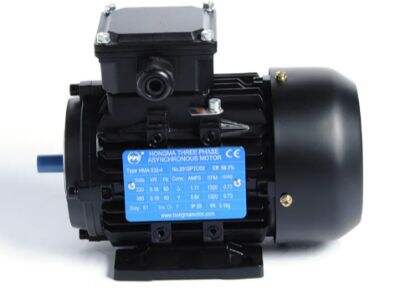Industrial asynchronous electric motors are used in a wide variety of machinery and equipment that we use every day. They are available in various types and sizes, requiring you to keep all the specs in mind when choosing a matching one for a particular application.
AC vs. DC
When you are searching for an industrial asynchronous electric motor, among one of the most essential points is whether or not it operates Air Conditioner (alternating current) or DC (straight present). Although, AC motors most frequently operate in these industries because of its straightforward design and variability in speed. In contrast, a DC motors are normally applied to applications requiring precise speed control.
Evaluating Power Ratings and Efficiency
The industrial asynchronous electric motor looks at power ratings and efficiency. It is a measure of the maximum power the motor can accept without overheating or being damaged. Choosing a motor with the right power rating for the machinery is crucial. Another key parameter of a HONGMA three phase induction machine is its efficiency, which indicates the extent to which the motor can convert electrical energy into mechanical energy. A higher performance motor will be less likely to use so much electricity, and will save both cash and operational expenditures.
The Energy Requirements of Voltage and frequency
The choice of an industrial asynchronous electric motor must be carefully considered taking into account also the voltage and frequency requirements. The motor needs a power supply of the same voltage to avoid damage, as it would run at wrong speed otherwise. The power supply frequency (normally in the hertz range) also needs to comply with the motor's frequency rating to prevent overheating and performance issues. A thorough review of these specs would prevent you from damaging the engine as well performance-wise.
Influence of Frame Size and Mounting Options
Two such significant specifications that cannot be taken for granted while selecting an industrial asynchronous electric motor are frame size and mounting options. The frame size is the actual dimensions of the motor—length, width, and height. Duty of a motor is necessary to pick the motors by keeping in mind its frame size so that it can easily be adjusted into equipment at where you are going to install your machine. Mounting Methods: Also related to how the HONGMA 3 phase asynchronous induction motor will hold in its place. The foot-mounted or flange-mounted offers economical flexibility in installation and maintenance.
Speed vs. Torque vs. Overload Capacity Tradeoffs
The following are important specifications you need to consider when choosing an industrial asynchronous electric motor: The requested specific speed, torque and overload capacity Min. Speed is its capability of the motor to turn, normally ranked in rotations per minute (RPM). Torque – Since these are motors, torque or rotational force is important because it determines what the motor can do. The overload capacity is a measure of how much additional load for which the motor can be safely used on a temporary basis. These individual specs must be balanced to make sure the motor can provide the necessary performance for powering the equipment.
The choice of an industrial asynchronous electric motor for a specific application should be based on the most appropriate key specs, as already shown here in order to achieve good performance and efficiency and maintain safety. You can choose the right motor for your application by evaluating AC vs. DC operation, power ratings, voltage and frequency requirements, frame size and mounting options, as well as speed, torque, and overload capacity. The HONGMA industrial asynchronous motors have a variety of specification so as to satisfy different applications and demand reliable, efficient operation.

